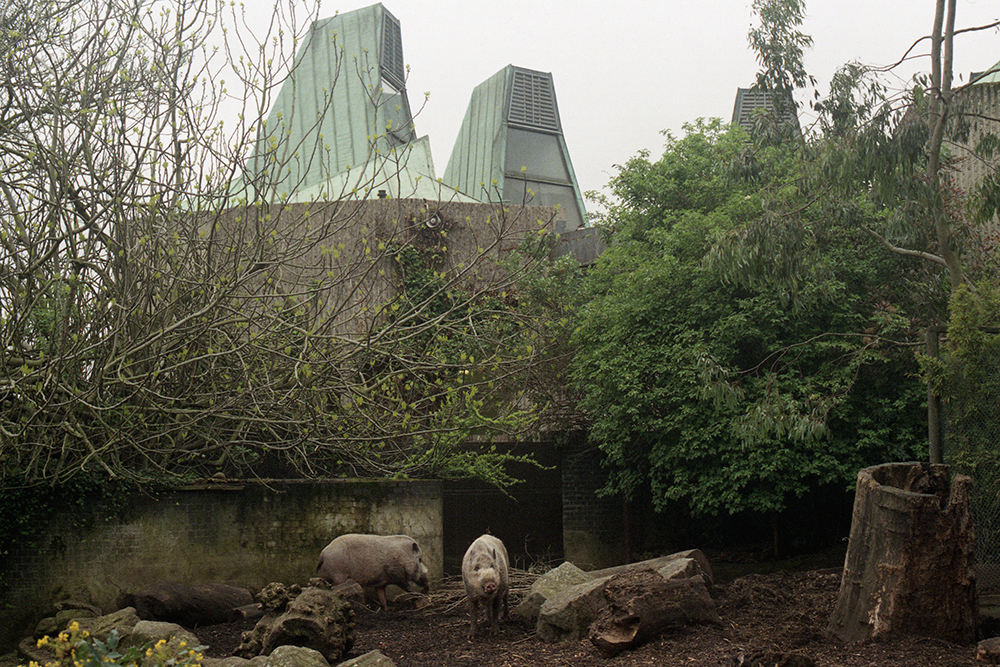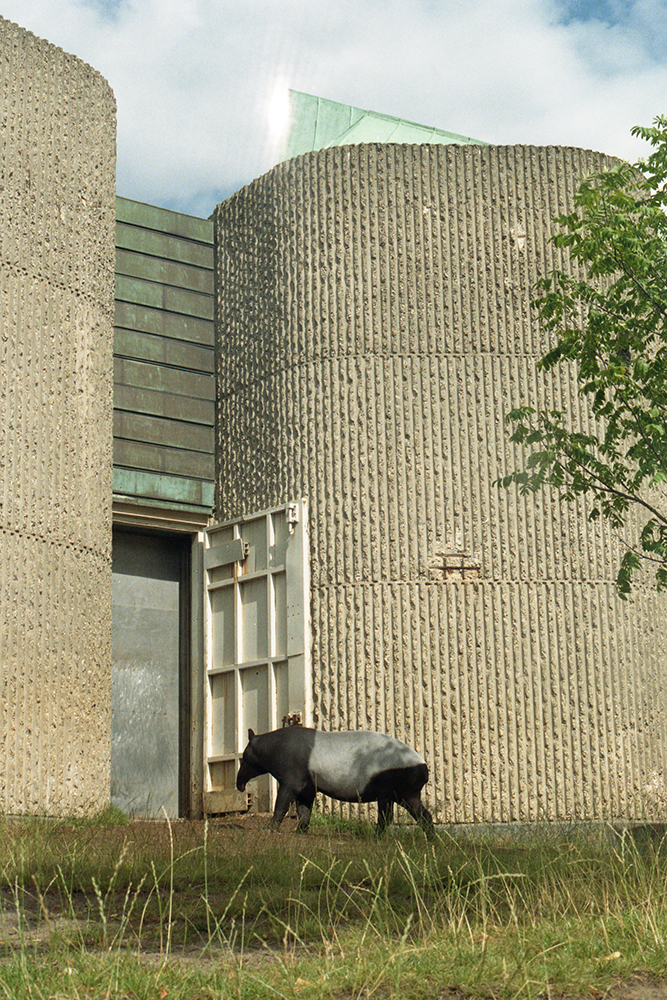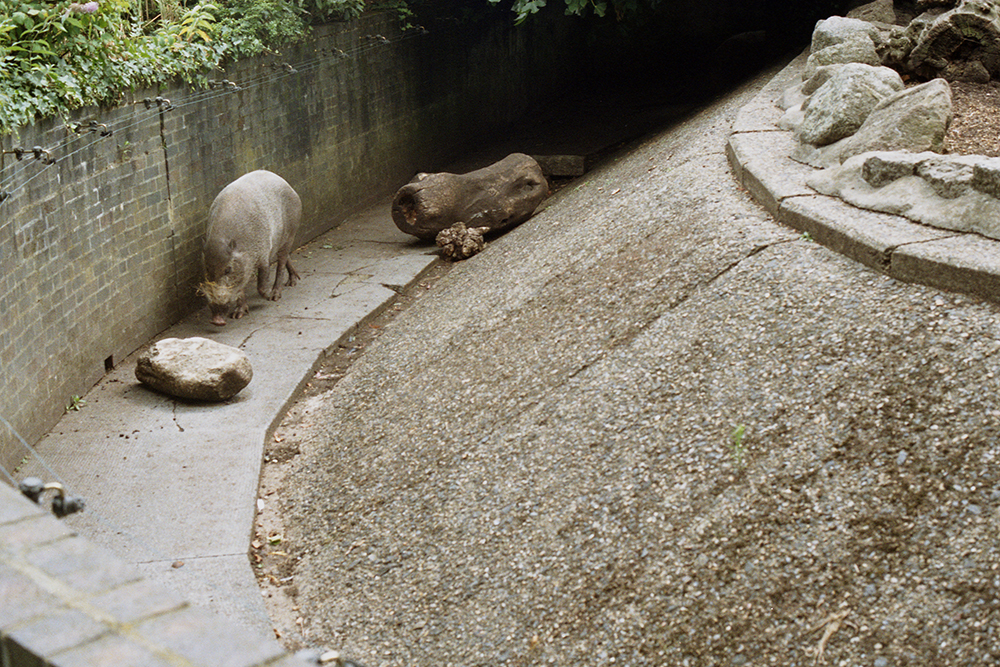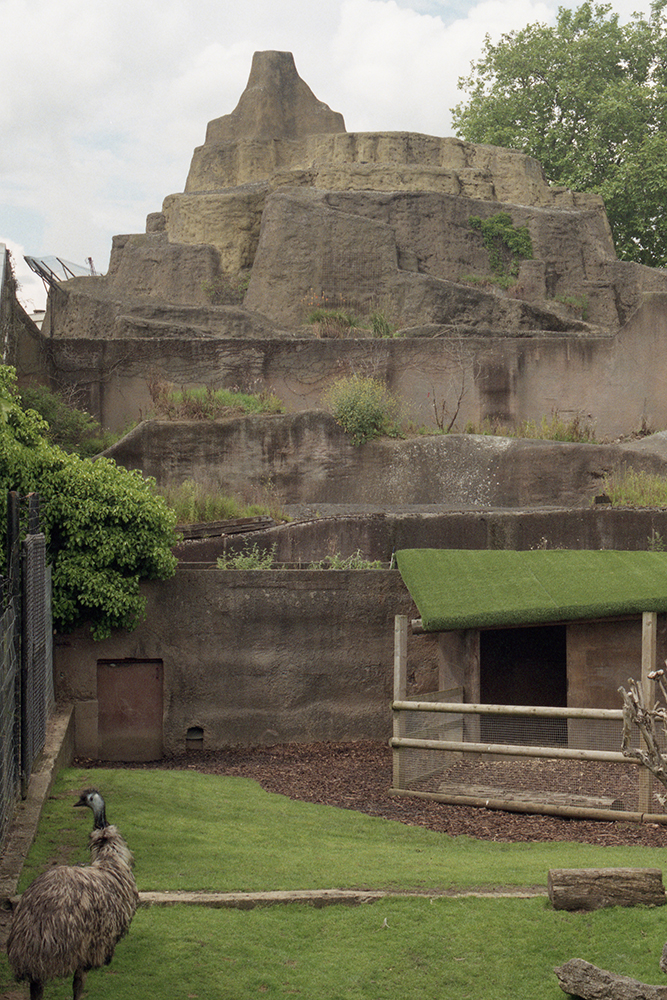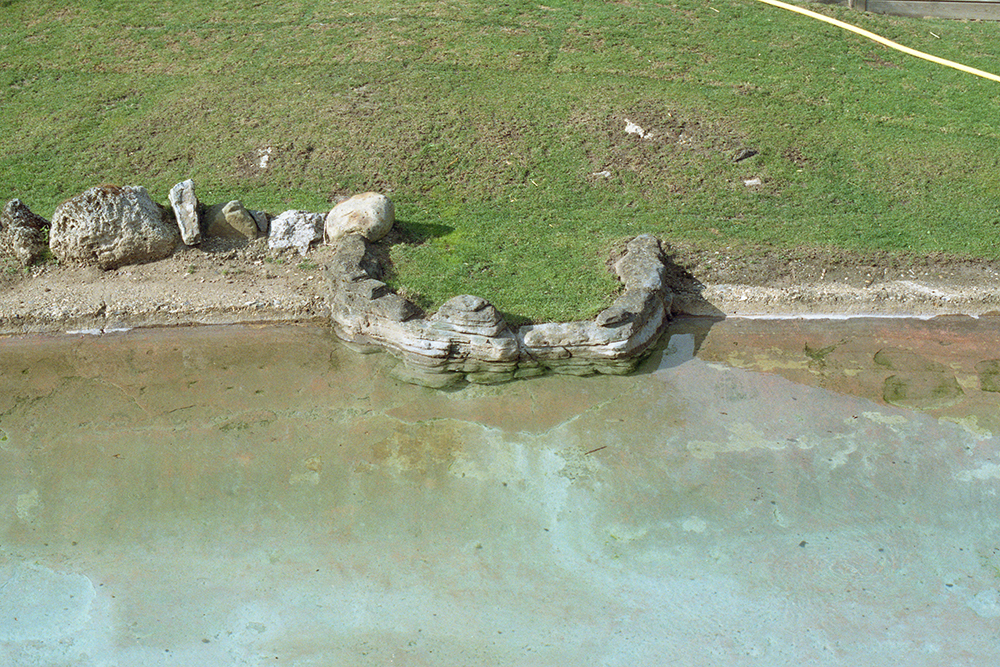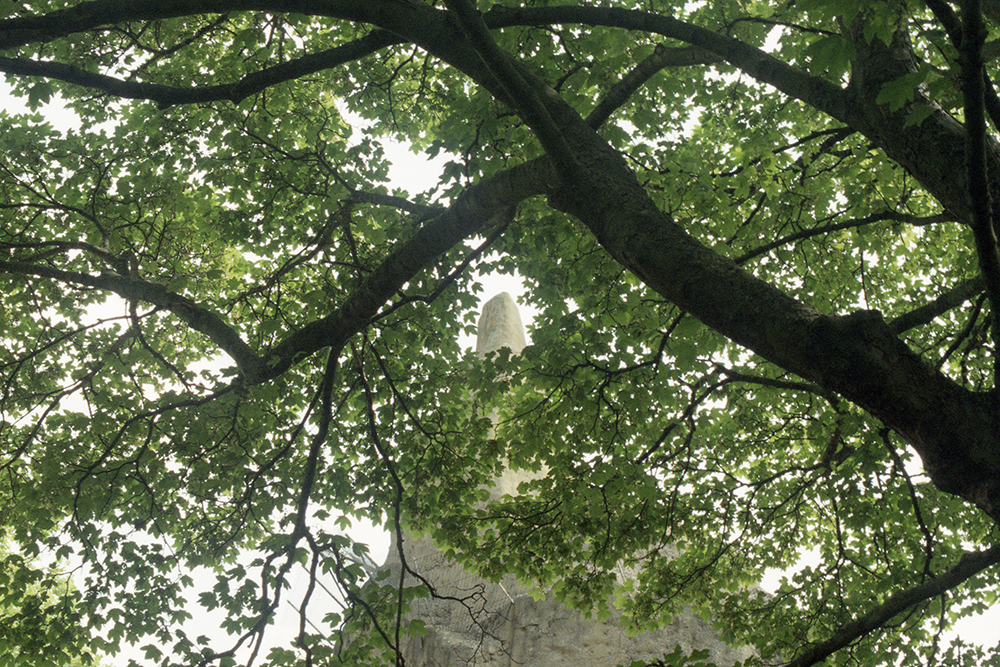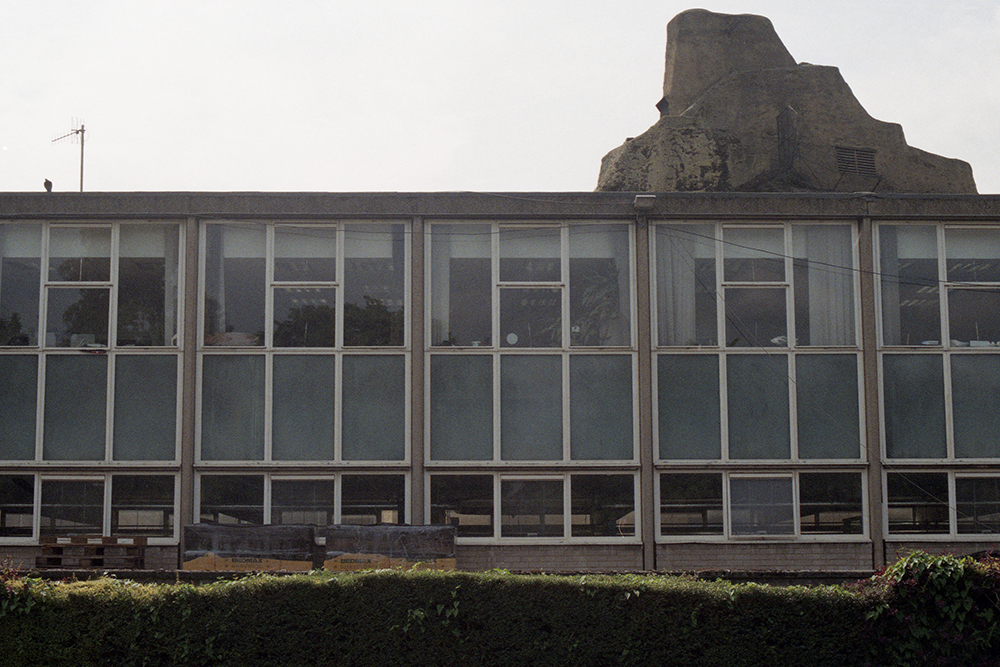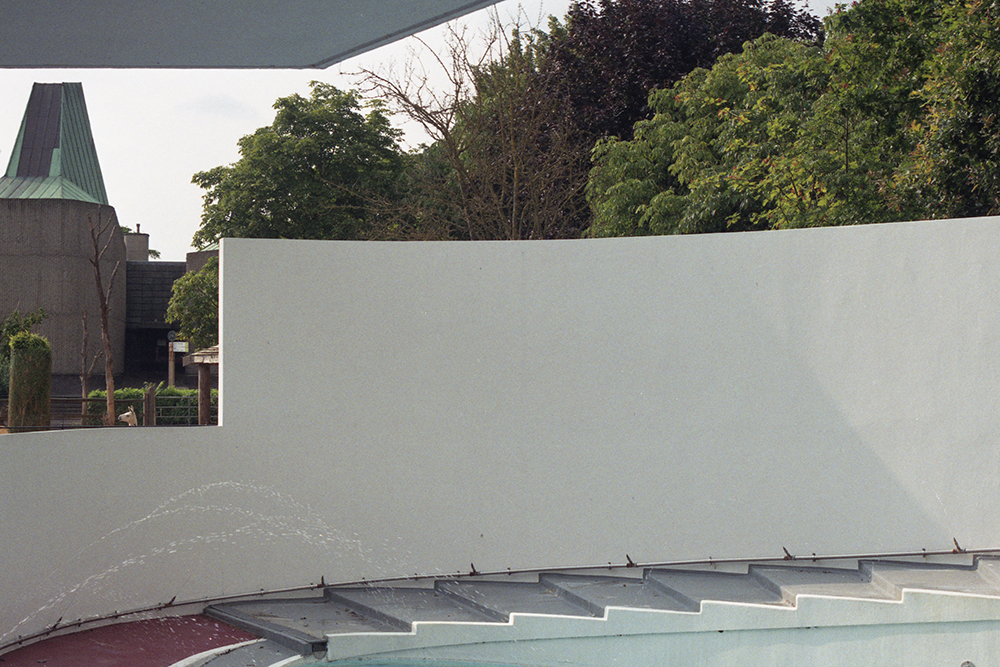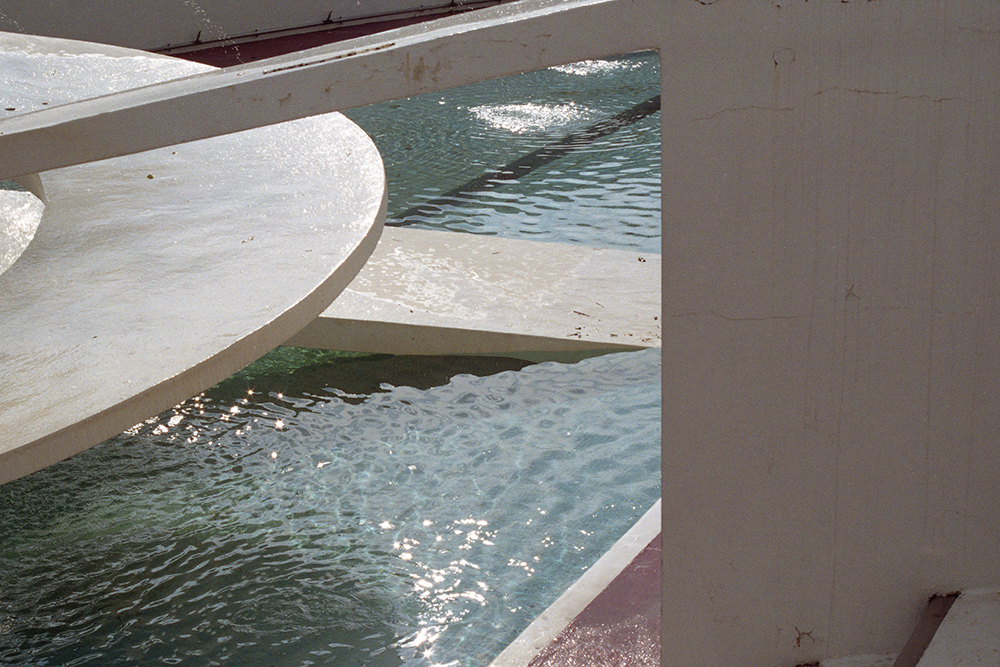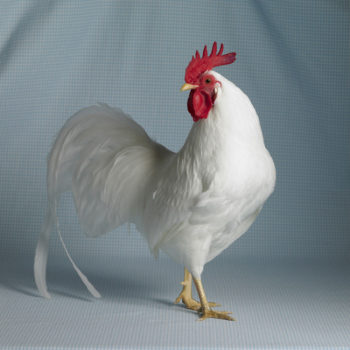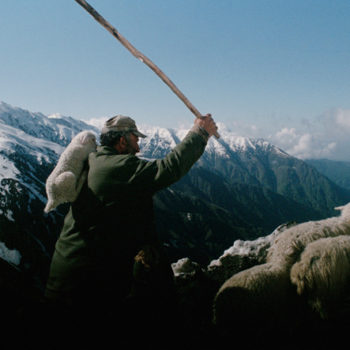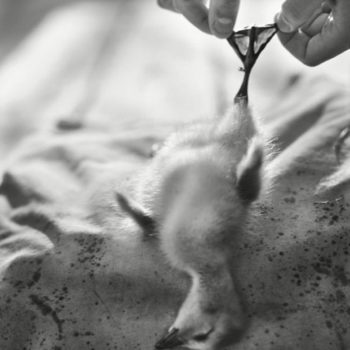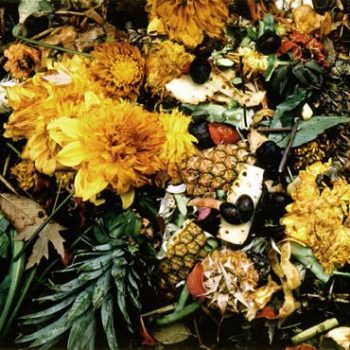When I was living in Kansas, I loved to visit the Kansas City Zoo and check out the iconic old Great Ape House, which looked like an animal enclosure in a zoo of the future (I suppose it’s the fact that it was built in the 60s and was intended to have that space-age look that makes me think of it that way). The structure was torn down this past fall, after having sat empty for over a decade. Even though zoos all over the world have spent that time moving toward more naturalistic animal enclosures, and the Great Ape House was often considered a prison for the intelligent gorillas, chimpanzees, and orangutans that it housed, many are nostalgic for the classic structure of the past, I learned from a Kansas City Star article.
This is what’s on my mind as I view and think about Jade King’s series Nature and Concrete, which addresses the complex urban morphology of the Zoological Society of London Zoo. King’s photographs feature three structures: The Mappin Terraces (or “Bear Mountain,” built 1913-14), The Penguin Pool (built 1934), and The Elephant & Rhino Pavilion (built 1962-65). I find the story behind the scenes and the images King created of them quite fascinating.
From the artist’s statement: Each of these structures is a demonstration of a constructed idea of the ‘natural’. The structures are preserved as architectural monuments, but were built as enclosures: to house, present and retain particular animals. At the time of visiting, none of the three structures were home to animal species originally intended to occupy the space – ‘Bear Mountain’ is now the ‘Australian Outback’, penguins live on the other side of the zoo from Lubetkin’s modernist Penguin Pool, and tapirs and bearded pigs wander mainly unnoticed around the edges of Casson’s Brutalist Elephant & Rhino Pavilion.
The outdated but grade-listed structures cannot easily be demolished, so the zoo is forced to adapt the structures in consideration of constantly changing developments in animal husbandry. Disjointed modifications appear awkwardly within the built fabric, and indicate makeshift responses to the unanticipated behavior of the resident animals, whose agency is marginalised by their captivity. Elsewhere, manmade barriers hide in plain sight: the zoo exists as a visual tableaux at once inviting speculation and controlling interpretation.
From “Nature and Concrete”
Visit artist's site: jadeaudreyking.com
Posted January 13th, 2016

